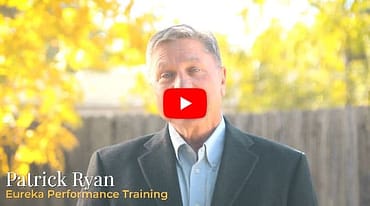Sales managers speak of overcoming objections to close the deal. Often times spending countless hours on listing out all the possible objections a prospect might have along with brilliant answers for each of these objections. While this is good advice for the sales people, I’d suggest we look at the Qualifying Process first.
In my experience with sales teams all over the US, I find the biggest breakdown in the sales process at the Qualifying stage. It’s not that the prospect isn’t a good fit for the service or product; it’s not that the sales person hasn’t asked the questions and found needs; and it’s not that their service or product doesn’t solve a problem or create a solution for the client. Where I see the breakdown is in the salespersons curiosity of the challenge, affect and costs associated with the Pain.
Working with a company in the high tech product field, the salesperson initially was asking all the right questions. Questions that uncover the hidden pain of the person or organization. Where the breakdown occurred was in the sales person’s lack of curiosity when they heard the answer to the question.
Here’s an example of how this initial conversation went:
Salesperson, “Why are you researching our product?”
Prospect, “Well, we need to know if the titanium version of your product is FDA approved?”
Salesperson, “Why do you need to know if it is FDA approved?”
Prospect, “Because our products are used in surgery and are left behind in patients. The FDA requires our manufacturing processes and products to be approved before being used by our customers.”
Salesperson, “Okay, I get it. Let me check with the manufacturer and I’ll get back to you!”
Did the salesperson ask a pain question? Yes. Did the salespersons ask why the prospect needed approval by the FDA? Yes. Did the salesperson learn of the reason why the prospect was researching his or her product? No! In this case the sales person did exactly what the prospect had asked, finding out if the product was FDA approved.
As I mentioned, the breakdown occurred in the lack of curiosity. What the salesperson didn’t uncover was how the prospect is currently manufacturing the product; or if the prospects competition was using the salesperson’s type of manufacturing equipment; or if the costs associated with their current process was becoming more expensive or in need of repair / replacement.
Here are some questions I suggested the salesperson ask at the next conversation:
I’d like to learn more about how you are manufacturing the product now.
What type of equipment are you using today?
How long does your current process take to manufacture the product?
Can you describe how your current process is being done?
Would my product replace your current process or simply supplement the manufacturing of your product? (Or) Are you thinking that our product will replace your current equipment?
(If the prospect’s company is replacing their equipment) –
What is the investment to purchase equipment similar to what you have been using?
What alternative equipment is available for the manufacturing of your product?
Are you anticipating our product will be less expensive?
And if so, are you anticipating our products process will save you money? Time? Or Both?
Are your competitors using our type of products to produce their products? If so, are your competitors out positioning you in the marketplace?
Had the salesperson directed the conversation with the questions above he/she would have had a much clearer picture of the prospects needs and possibly uncovered the pain. The salesperson would know why the prospect was researching their product and how it might save them time, money or both.
He or she would have been able to learn if the product they sell would be a fit for the prospects manufacturing process; and if not wouldn’t waste time researching the FDA approval question.
So, how does this type of curiosity questioning lessen or remove the objections from the presentation step in the sales process?
Assuming the salesperson continued to uncover the pains and had the solution to resolve the prospects challenges; he or she could anchor the pains in the presentation with solutions, thus reducing or even eliminating objections at closing.
In my experience, most sales people are not digging deep to uncover pain. They hear the answer, “We need a new way of doing it!” but don’t ask why, how, what’s wrong with the current “it?” The door to the prospect’s pain is open in nearly every conversation. It’s up to the salesperson to identify the “it,” dig in and discover the prospects pains.
Sales managers – Practice the qualifying questing step of the sales process to reduce the objections at closing; you’ll make more sales!



